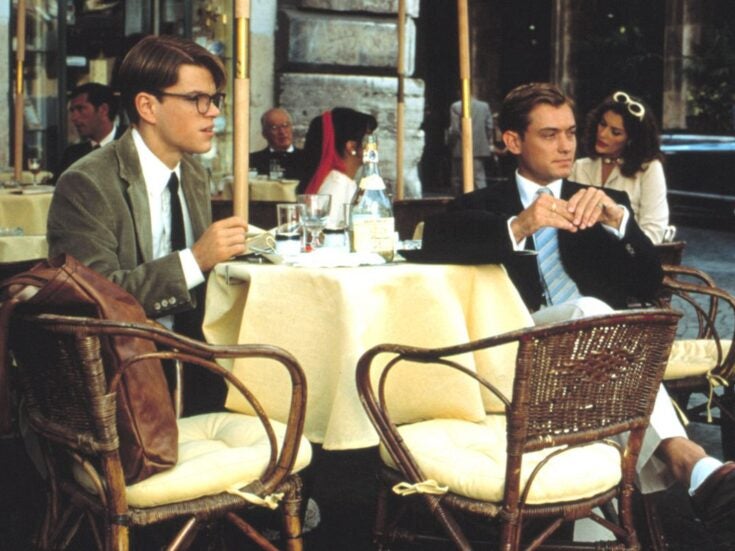Eating, shooting and everything but leaving.
READY, SET…
If lunch is the new dinner, the set menu is the new à la carte. Previously the words ‘set menu’ were only ever uttered in London’s best restaurants sotto voce and certainly without pride. Gone are the days of £250 lunches — £25 is more like it.
That’s why top restaurants are now doing booming business with inflation-busting set menus. The ancien regime of former financiers are snapping them up, and even if, in these straitened times, one has to economise, it ought to be on the price and not the quality. There is now no shortage of restaurants leading the way.
Step forward, Marcus Wareing of Marcus Wareing at the Berkeley. His lunch menu has plenty of his signature brio, including ‘honey-soused sardines’ and the ubiquitous (but always welcome) ‘slow-cooked crispy belly pork’. Any meal that ends with a bon bon trolley is surely to be welcomed, and at £35, one should make reservations every weekday until the credit line runs out.
Another cantina to head for is L’Atelier de Joel Robuchon. Their lunch menu (also available pre-theatre) is even more reasonable, at £19 for two courses and £25 for three. Everything is as Gallic as ever, but even the hungriest of diners needs no help to work out what le dessert du jour is.
L’Oranger on St James’s Street obliges with a late-winter set menu: £29 for two courses, £34 for three, offering the most comforting of foods for these short days.
Most of these menus aren’t available at dinnertime, which implies there may be some residual chagrin attached to them, but forget that: set menus are set for triumph.
SECRETS OF CEOS
To the National Theatre, where a spectacle far more engaging than anything a mere Shakespeare or Shaw could devise was unfolding.
On the smart new roof terrace, giving fabulous views of the river and the IBM building, a book was being launched. Not just any book: The Secrets of CEOs. ‘One hundred and fifty global chief executives lift the lid on business, life and leadership,’ shouts the cover.
Steve Tappin and Andrew Cave gained access to the inner sancta of CEOs, where power really lies. Forget Downing Street and the White House — if you can make it onto James Murdoch’s sofa you can make it anywhere. The launch was hosted by Lord Browne, BP’s former CEO.
The book contains some wise words. For example: ‘I’m not a sailor, but one of the things that everybody has said to me is that capital markets are like the tide. Once it has gone out, you are left high and dry.’
So who spoke such pearls, yet singularly failed to take this advice? Step forward Andy Hornby, former chief executive of HBOS.
‘In the acquisitions camp is Sir Fred Goodwin, whose “Fred the Shred” nickname, bestowed on him for his cost-cutting as chief executive of the Royal Bank of Scotland, underplays the enormous value he has added to a once provincial Scottish bank by executing and integrating large and risky acquisitions such as NatWest bank and regional US banks.’
RBS share price one year ago: 470p. At time of writing: 87p.
THE DRAGON ROARS
How to occupy one’s tearaways has never been an easy question to answer, and if you don’t get it right, a fate worse than death (drunken teenagers) may await.
It seems that someone else had this thought, and instead of proposing boarding school or juvenile prison, they came up with something better: a private members’ club for children.
Enter the Dragon. Purple Dragon, to be precise. What White’s is to City gent types, Purple Dragon is to their proto-social networking offspring. Set right by Battersea Park, the club features such a range of activities that parents are almost tipped into jealousy: kids get the use of a recording studio, so your budding Britney Spears or Amy Winehouse can lay down some tracks; mini-golf should bring out the proto-executive in them; and a science lab allows them to dabble with the laws of physics. Few know that the world’s only other Large Hadron Collider is in SW11, but this one is better: no adults allowed.
Sharai Meyers, the founder of Purple Dragon, says that she wanted to create somewhere for children and adults, ‘The children can go play in the music lab or on the Wii while the adults sit down with a plate of cheese and port.’ That’s my kind of club.
As their upbeat philosophy states, you too can have any future you choose. Price: £2,500.
MODERN MANNERS
There was a time when the name ‘Debrett’s’ was synonymous with everything that is correct. The illustrious figures found between its distinctive post-box red covers were the sort of people you would expect to know the form, whether for addressing a dowager duchess or for how much to tip your loader after a double-gun day in Rutland.
However, with the wealth revolution of the last decade bringing a revealing 762 self-made multi-millionaires onto the Sunday Times Rich List, all this new money has caused some concern at Debrett’s over whether contemporary manners and society etiquette are up to scratch.
It’s all very well for a hedgy to walk into Holland & Holland on Bruton Street to kit himself out for a couple of days’ grouse-shooting on the moors, but not if he emerges with a pair of pump-action shotguns.
Debrett’s new Guide for the Modern Gentleman aims to clarify and educate anybody whose social skills are rough around the edges.
However, having browsed through the book, I am a little nervous about some of the advice that has been handed out. In the shirt section, it reliably informs readers that ‘monograms should be embroidered on your cuff or by your waist only’ and that monograms on the chest ‘are vulgar’.
This is not the authoritative opinion of my shirt-maker at Budd in Burlington Arcade, possibly London’s most exclusive shirt-maker: clients are politely informed that the only place for a gentleman to have a monogram is on the back of the collar, as any visible monogram is bordering on tacky.
HOLLYWOOD OF THE NORTH
Venice was such a bust this year: despite promises of countless production deals, nothing (beyond a riches-to-rags biopic of Dick Fuld) emerged.
But no longer will anyone be beholden to the established lords of the reel: in the tundra of the north of England, around Durham, a film studio complex is due to start rising that will if not rival Hollywood then at least make it a bit more afraid of England. Coolmore Estates, set for completion in 2013, is coming. First up: a glorious history of capitalism; think Orson Welles meets The Wealth of Nations.
Currently seeking £31 million in equity capital, the scheme (which includes nine sound stages, industrial workshops and technical support) will draw back the filming which currently goes to London or abroad, and will form part of a much larger project with facilities for a university and student residences. The whole project has been designed by Michael Drain Architects.
Just imagine: when one needs thousands of extras for a film, all you need to do is rouse the undergraduates from their digs.
SET TO JET
It’s like buses: you wait hours for a private jet company, then two come along at once. Well, no more standing on airport tarmac with my thumb out, trying to hitch a lift on a passing Lear Jet.
First to make private flying addicts salivate was LunaJets, which is more than a fleet of planes — it’s an idea. And green, too. The last time you disembarked at Teterboro and made your way into the sleepless city, did you give a passing thought to the plane, flying back to RAF Northolt, empty but for the cabin crew waiting in vain to offer someone a sleeping mask?
Well, the stewards need no longer wait. LunaJets specialises in empty legs, selling off these return journeys. As CEO Eymeric Segard says — from the comfort, I presume, of a returning Airbus 380 — ‘The flights are going to take place anyway — you might as well sell them.’
And since they’re going anyway, it’s greener to hop on than to charter another plane for a one-way trip. What is especially interesting about LunaJets is that once you’ve paid for the whole cabin, you can sell your own spaces aboard to recoup your costs. You might even turn a profit.
Jet Republic have also launched, with their Learjet 60 XRs and BlackBerry-enabled cabins. You are offered the chance to be part of both the Republic and their private club.
The feeling does arise, however, that perhaps this is an infelicitous time for new airline businesses. It has only been months since Eos and Maxjet fell out of the sky, so to speak. Still, the one positive effect of the credit crunch has been to drive oil down. Impending global recessions have that effect.
HIGHLY RESERVED
Even a discriminating globetrotter comes up stumped in Geneva. A profusion of hotels with more stars than the Milky Way, makes choosing as hard as going down a black run after the après-ski.
Happily, Hedgehog’s mole in Geneva says that the place where the deal-makers are going is La Reserve, which has a dozen beautiful villas on the lake. According to this very same mole, ‘It’s a cross between an African game reserve and the Baur au Lac.’
The managing director of La Reserve Geneva, Raouf Finan, told this mole that ‘we had the choice to be like everybody else or to be completely different.’ The completely serene atmosphere, as well as the tropical touches (bamboo, birds of paradise on the lights), reflects this.
Michel Reybier, owner of La Reserve, made his fortune in the refrigerated meats industry, but has now turned to vineyards and hotels, challenging One&Only for exclusivity with La Reserve. As well as Geneva, there is Paris, a set of apartments in the chic 16th, and Ramatuelle, self-contained villas near St Tropez.
Promisingly for Londoners who want refuge from their own home and visitors from abroad who want La Reserve standards in London, Reybier is said to be looking for a location in town, seeing an opportunity for growth in the credit crunch. The king of cold cuts is about to take a slice out of London.
DUCKING COVER
It is estimated that the total value of personal possessions left unattended by the British in their second homes in the UK and overseas is £6.3 billion. If you have a collection of objets (an early Picasso, a late Hirst, a minor Koons, a major Freud, say) stored in a sweet chateau, best insure them now.
Protection is necessary. Grandfather’s furniture is not easily replaced if a riot from Naples spills over into the villa on Capri, nor are the heirlooms in the Alps much use if your chalet is covered by an avalanche. It turns out, however, that 10 per cent of people have no contents insurance for their second, or even third, homes.
For overseas properties, language barriers, complex local wordings and misunderstanding of the local insurance market can put people off from insuring at all and when they do, they have no idea what is covered or how to claim.
According to Martin Bell at private client specialists RK Harrison, ‘there simply aren’t that many UK insurers who will insure property abroad. Those who have a global reach tend to protect their local markets and are not, therefore, receptive to this business.’
‘One solution would be to insure art and contents on a worldwide all-risks basis. There are also some very good UK insurers that offer wide cover for overseas property on a UK wording. All local taxes are taken care of, premiums can be paid off-shore or in the local currency.’
GEARING UP
There is nothing quite like a quiet day in the Home Counties, tootling through leafy canopies and along golden hillsides, so when Quintessentially Secure said that one could spend some time with them in the countryside, you could be forgiven for assuming it would just be a couple of heavies and their principal in the Z4.
Quintessentially, it emerges, provides the services of a security, intelligence and protection specialist who can train you — or preferably, your bodyguards — in all the skills that a nimble HNW needs to get out of even the trickiest situation.
You learn a set of skills no HNW or HNW-acolyte can survive without. You can end up a black belt (Hermès, of course) at close quarters combat after a day, and can flee from a grenade like a champion.
The highlight was the driving skills course, which showed you how to do a J-turn: reverse at full speed, pull the handbrake, spin about and zoom off into safety, out of the clutches of imagined oncoming paparazzi wielding SLRs like Uzis.
SHOOTING THE MOON
If your stocking is not weighed down by A Keen Shot’s Miscellany by Peter Holt this Christmas, even the keenest shot will feel left out. It is chock-full of shooting tidbits gleaned from experts both modern and ancient.
There are over 300 entries relating to shooting throughout the ages. Peter Holt’s love of history is obvious: he wrote a book on Clive of India and many of the examples have a historical angle. One of the first entries traces the history of shooting back to 1533, but the sport, still in its infancy, was not popular yet. In1603, James I remarked: ‘Hunting with running hounds is the most honourable and noble sort of sport, but it is a thievish form of hunting to shoot with gunnes.’
There are more modern nuggets. One is about an American advert for a bizarre shooting accessory: ‘internal deodorant’, which is a tablet made of chlorophyllin copper complex, to banish your ‘inner smell’.
Holt writes: ‘You start smelling like a polecat. Or rather you cease to emit human smells, thus making it easier to get closer to your deer before zapping him. The advert rounds off by saying: “No adverse reactions with other medications have been found, however in a small percentage of cases, mild diarrhoea was noted.”’
You will be able to show off your in-depth knowledge when next out shooting if you memorise some of the specialist collective nouns: a puddling of mallard; a plump of woodcock; a head of curlews.
The up-to-date advice on how to deal with ‘antis’ (shoot saboteurs) might come in useful, as could some helpful excerpts from modern shooting books. There are no fewer than three pages from my father’s book, A Shooting Man’s Creed. Apparently he was very quotable. — Rosie Nickerson






